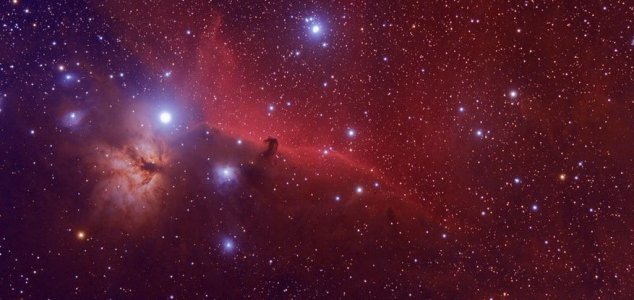Space & Astronomy
February 6, 2014 · 10 comments
10 comments

Stardust could be spreading organic material throughout the cosmos. Image Credit: NASA / Victor Bertol
"Despite their small size, these interplanetary dust particles may have provided higher quantities and a steadier supply of extraterrestrial organic material to early Earth," said Michael Callahan of Goddard's Astrobiology Analytical Laboratory.
While it was already known that this material was finding its way to us in a small percentage of meteorites, this latest discovery suggests that the building blocks of life may have been far more widely available from extraterrestrial sources than previously believed.
Source: Nature World News | Comments (10)
Ingredients of life found within stardust
By T.K. RandallFebruary 6, 2014 ·
 10 comments
10 comments
Stardust could be spreading organic material throughout the cosmos. Image Credit: NASA / Victor Bertol
Researchers have discovered that organic material may be hitching a ride in interstellar dust particles.
The discovery was made thanks to a new analytical method enabling a NASA research team to examine tiny samples of meteorites. The organic material found in stardust could have been raining down on our planet from its earliest days, potentially explaining how life on Earth originated.While it was already known that this material was finding its way to us in a small percentage of meteorites, this latest discovery suggests that the building blocks of life may have been far more widely available from extraterrestrial sources than previously believed.
Source: Nature World News | Comments (10)

The Unexplained Mysteries
Book of Weird News
AVAILABLE NOW
Take a walk on the weird side with this compilation of some of the weirdest stories ever to grace the pages of a newspaper.
Click here to learn more

Support us on Patreon
BONUS CONTENTFor less than the cost of a cup of coffee, you can gain access to a wide range of exclusive perks including our popular 'Lost Ghost Stories' series.
Click here to learn more
Ancient Mysteries and Alternative History
UK and Europe
Cryptozoology, Myths and Legends
True Crime
Total Posts: 7,607,096 Topics: 316,426 Members: 201,849
Not a member yet ? Click here to join - registration is free and only takes a moment!
Not a member yet ? Click here to join - registration is free and only takes a moment!

























Please Login or Register to post a comment.